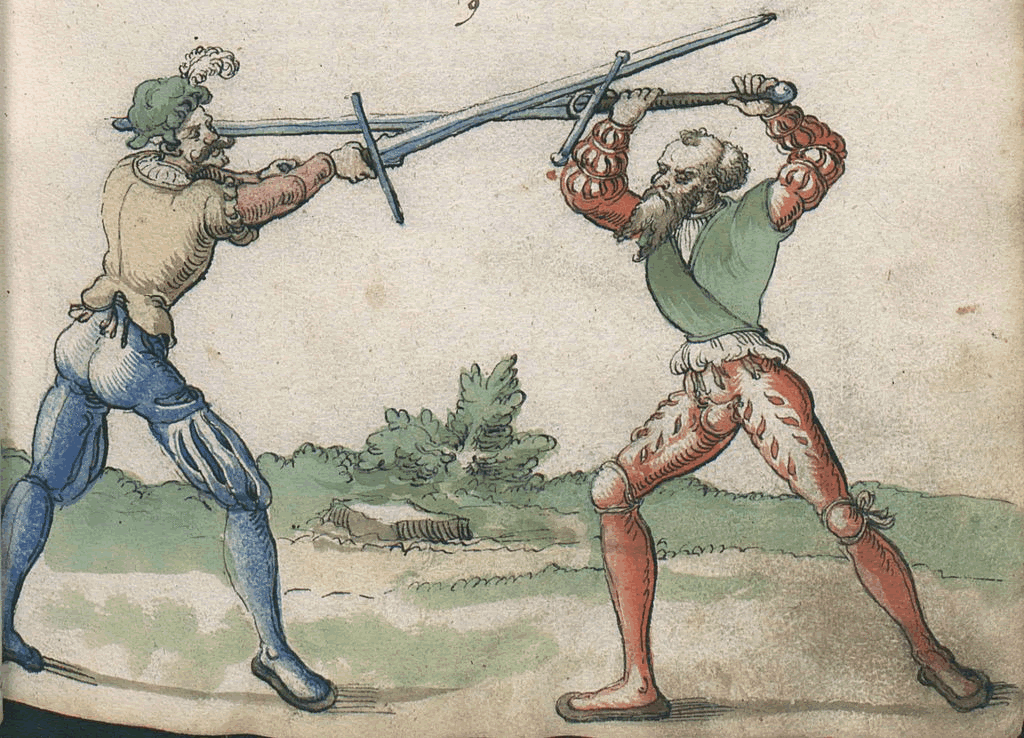H1: The wrath strike (Zornhau)
"Understand it thusly: When one cleaves-in above from
his right side, so also cleave-in a wrath-cut with him, with the
long edge strongly from your right shoulder. If he is then soft
upon the sword, so shoot-in the point forward long to his face
and threaten to stab him."




